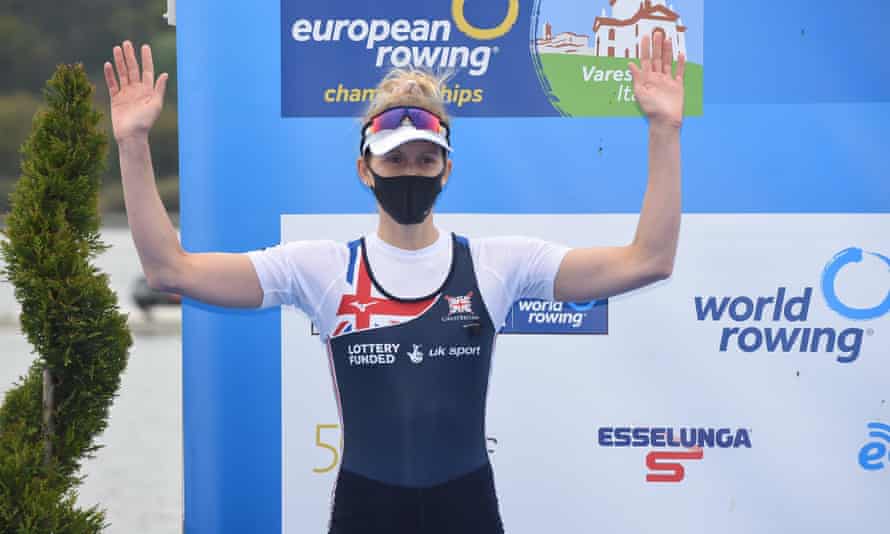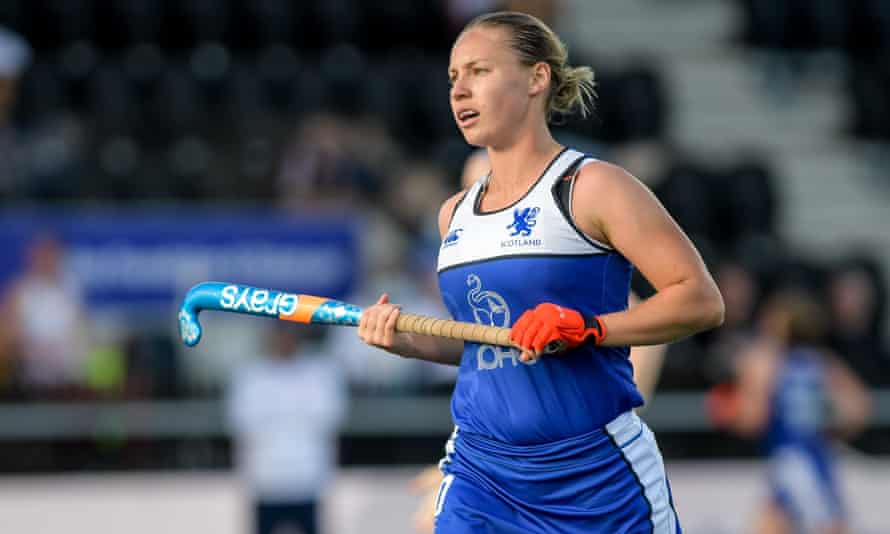
As Tokyo hopefuls debate the marginal gains afforded by Vaporfly running shoes, Britain’s sportswomen have been keeping another secret weapon close to their chests.
In the drive for marginal performance gains, female members of Team GB and Paralympics GB have been fitted with specially designed sports bras, to hoist, sculpt and support their path to victory.
“Everything we do in elite sport is aimed at trying to give that little tiny improvement,” said Dr Anita Biswas, senior sports physician and co-lead of female athlete health at the English Institute of Sport (EIS).
“Having an athlete who is comfortable, whether that’s through their equipment or clothing, can have a significant impact on their ability to focus on the task. We often think about the overgarments, we don’t think about the undergarments,” she said.
Wearing an ill-fitting bra can create multiple problems for women, from breast pain and sagging tissue, to chafed skin, but it can also affect their athletic performance. Recent research by Joanna Wakefield-Scurr and her colleagues at the University of Portsmouth found that running in a poorly supportive bra shortened women’s stride by up to 4cm – which could add up to an extra mile over the length of a marathon.
It also made exercise feel harder, and increased their upper body muscle activity, which could mean they feel tired sooner. “If the breasts are well-supported you have a more natural breathing flow, particularly during physical activity, and you move more efficiently,” said Wakefield-Scurr.
In 2019, she teamed up with the EIS as part of a wider campaign to improve sports women’s health and performance. An initial survey of 70 elite athletes revealed that 75% had never been fitted for a sports bra, while 26% said breast pain had affected their performance.
Biswas said: “Most of the athletes wear the kit they’re provided with [by sponsors or event organisers], and although underwear isn’t part of that obligation, because they get a free crop top and all of the rest of their clothing is logoed, often they will just wear the one that comes along with it.
“Some athletes were giving it no thought whatsoever, and others were giving it some thought – that it was a bit uncomfortable, so they would put a bra underneath – but they weren’t necessarily considering that they should use something completely different.”
Of the surveyed athletes, 70% said they would like further help to improve their breast health, so the EIS teamed up with underwear manufacturing company Clover to design and fit sports bras for more than 100 British athletes from 15 different sports. They also produced bespoke bras for several athletes with specific breast issues. This included a female rower, who was having to tape her heavy breasts to her body because she couldn’t find a bra to hold them in the right place, and a Paralympic shooter, who could be disqualified if her breasts touched her rifle (see case study). “From a bra design perspective, there are some really easy wins,” Biswas said.
Other female members of Team GB and Paralympics GB have been offered a choice of an encapsulated sports bra for high-impact sports such as running, which contains individual cups to support each breast; or a compression-style bra for lower-impact sports such as rowing, which hugs the breasts against the chest to limit their movement.
The Team GB rower Vicky Thornley said: “There’s a lot of innovation in general sports kit, but that innovation hasn’t really crossed over into sports bras for women until now. I think it’s really encouraging that they’re starting to think about women in that way in sport, and not just treating us as small men.”
The athletes received their new bras earlier this month, before the Olympic Games which start on 23 July.
Biswas said: “I would be exaggerating if I said a bra is going to make all the difference; it will be all the other things that an athlete has done over the last four or eight years. However, just being more comfortable and not having to think about their breasts moving, will undoubtedly have a little bit of impact.”
And in the quest for Olympic gold, even a little bit of impact counts.
Lorraine Lambert, Paralympic shooter
Lorraine, who hopes to win a medal at the Paralympic in September, has been fitted with a bespoke bra which she hopes will improve her performance by keeping her breasts out of the way and preventing the tiny movements of her heartbeat being transferred to her rifle.
“Unlike the dynamic sports where they’re trying to minimise [breast] bounce, I just need to be really still, because when I shoot, we’re talking millimetre precision,” she said. “I’ve also got quite a large chest, so my bra is all about flattening me.”
To achieve this, the Clover designers used mesh panels, and the strategic placement of darts to redistribute Lorraine’s breast tissue, pushing it down, and then forwards, so that when she’s shooting, the gun doesn’t have any contact with her body. This is important, because she could be awarded penalty points if her rifle touches her breasts. “The gun is allowed to touch my hands because I’m holding it, and I’m allowed to support my arms on to my torso, but the gun physically cannot touch me anywhere on my body,” she said.
Optical sensors attached to Lorraine’s gun suggest that her accuracy has improved, as a result of the new bra. She also feels more comfortable wearing it during shooting. “It’s not only the support and how it flattens me, I just feel better in it,” she said.
Vicky Thornley, Olympic rower

Olympic silver medallist Vicky has been fitted with a compression-style sports bra, like the ones many Team GB athletes will be wearing in Tokyo
Clover’s technical designer, Megan Blakemore, said: “The first thing we looked at was the fabric. Obviously, they’re going to be competing in really hot weather in Tokyo, so we chose a supersoft, cooling, fine-gauge fabric, where we could have the edges completely clean for aerodynamics.”
The bra also features cutaway areas at the back, where women often feel hottest, plus zoned support in the areas where this is most needed.
Vicky is trying her new bra out at a training camp in Italy. She said: “It’s pretty good in the heat because the material has a kind of wicking effect, so I think that will definitely have a positive impact on performance as we’re going to race in heat in Tokyo,” she said.
Before the EIS project, Vicky said she hadn’t really thought about the type of bra she wore. “I often just bought bras that were nicely coloured or patterned, rather than thinking about their functionality. But a sports bra is actually a massive part of the women’s kit, and it is only now that it’s really starting to be talked about and made a priority in terms of our performance.
“I’m hoping we’ve got a lot more secret weapons than sports bras, but it can never harm.”
Sarah Robertson, Olympic hockey player

Field-based athletes such as the hockey player Sarah Robertson often have to wear heart-rate monitors, GPS trackers or other smart devices, usually contained within a separate harness, worn underneath the athlete’s top.
“It seems so obvious, in terms of women’s comfort, that they shouldn’t have to wear an additional thing to carry their GPS system, as well as their bra, but like many things in sport, the idea often starts off in male sports and then gets adapted, rather than being developed from scratch with the female athlete in mind,” said Anita Biswas of the English Institute of Sport.
An additional challenge for Sarah was the combination of a relatively large cup size and small band size, which made it difficult for her to find a suitable off-the-shelf design. “Even if I bought a bra which technically fitted, with the level of support they provide, they’re just not designed to withstand the high levels of impact that running and hockey have,” she said.
Clover created a bespoke encapsulated bra, which incorporates a pocket for her tracking devices, as well as pushing her breast tissue forwards, to provide a greater range of movement for her arms, reducing chafing.
Sarah said: “For me, it was about getting a bra that I was comfortable performing in the Great Britain strip, which has a very narrow racerback, and also, given the conditions in Japan with the humidity, not wanting to wear an extra layer for the GPS device.
“If you’re stepping on to any pitch worried about your outfit or your equipment, you’re already on the back foot, so I think it will increase my performance from the point of view of just being comfortable with what I’m wearing.”
